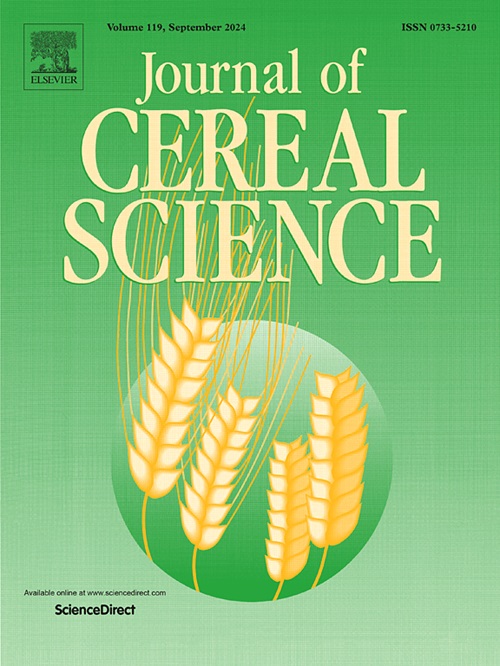Graphene irradiation heating on corn grains: Effects on bioactive compounds, thermal, structural, and functional properties of corn flour
IF 3.7
2区 农林科学
Q2 FOOD SCIENCE & TECHNOLOGY
引用次数: 0
Abstract
Drying methods often suffer from high-temperature strategies that lead to overheating and uneven drying. However, graphene may provide significant improvements due to its ability to dry products at low temperatures and convert electro-thermal energy effectively. This study used a graphene far-infrared dryer to investigate the impacts of different corn varieties (ZD88 and RP909) at varying infrared temperatures of 35, 45, and 55 °C. It also analyzed the changes in various bioactive compounds, structural and functional properties of corn flour. The findings indicate a maximum reduction of relative crystallinity in RP909 by 20.19 %, and changes were observed in the structural order of protein content at 55 °C. The results observed a decrease in gelatinization enthalpy with an increase in gelatinization temperature. However, the in vitro digestibility for ZD88 shows that the slowly digestible starch recorded an increase of 14.15 %, while rapidly digestible starch and resistant starch observed a higher decrease of 9.38 % and 23.56 %. It was revealed that ZD88 recorded a higher phenolic value at 35 °C. Additionally, ZD88 and RP909 demonstrate a reduction in oil absorption capacity and water absorption capacity, while increasing their water absorption index and water solubility index on corn flour. This research highlighted that graphene irradiation heating systems could be a promising solution to enhance corn flour characteristics for industrial applications.

石墨烯辐照加热玉米颗粒:对玉米粉生物活性成分、热、结构和功能特性的影响
干燥方法经常遭受高温策略,导致过热和不均匀干燥。然而,石墨烯可能会提供显著的改进,因为它能够在低温下干燥产品并有效地转换电热能量。本研究利用石墨烯远红外干燥器研究了不同玉米品种(ZD88和RP909)在35、45和55℃不同红外温度下的影响。分析了玉米粉中各种生物活性成分、结构和功能特性的变化。结果表明,RP909的相对结晶度最大降低了20.19%,并且在55℃时观察到蛋白质含量的结构顺序发生了变化。结果表明,糊化焓随糊化温度的升高而降低。然而,ZD88的体外消化率显示,慢消化淀粉增加了14.15%,而快速消化淀粉和抗性淀粉的下降幅度更大,分别为9.38%和23.56%。结果表明,ZD88在35℃时具有较高的酚值。另外,ZD88和RP909在玉米粉上的吸水指数和水溶性指数增加,但吸油能力和吸水能力下降。这项研究强调,石墨烯辐照加热系统可能是一个有前途的解决方案,以提高玉米粉的特性,用于工业应用。
本文章由计算机程序翻译,如有差异,请以英文原文为准。
求助全文
约1分钟内获得全文
求助全文
来源期刊

Journal of Cereal Science
工程技术-食品科技
CiteScore
7.80
自引率
2.60%
发文量
163
审稿时长
38 days
期刊介绍:
The Journal of Cereal Science was established in 1983 to provide an International forum for the publication of original research papers of high standing covering all aspects of cereal science related to the functional and nutritional quality of cereal grains (true cereals - members of the Poaceae family and starchy pseudocereals - members of the Amaranthaceae, Chenopodiaceae and Polygonaceae families) and their products, in relation to the cereals used. The journal also publishes concise and critical review articles appraising the status and future directions of specific areas of cereal science and short communications that present news of important advances in research. The journal aims at topicality and at providing comprehensive coverage of progress in the field.
 求助内容:
求助内容: 应助结果提醒方式:
应助结果提醒方式:


